
The Alchemy-Spetec app now includes a Leak Seal Material Selection Guide, along with the Polyurethane Estimating Calculator. The Leak Seal Product Selection guide asks you a series of Yes/No questions about your job and then provides product recommendations. The Polyurethane Estimating Calculator takes the guesswork out of estimating material for Leak Seal, Geotech, and Floor Repair jobs. Here's a step-by-step guide...
Download the Alchemy-Spetec App & Create an Account
1. Download the app.
Search Alchemy-Spetec in your Apple App Store or Google Play Store to install the app.
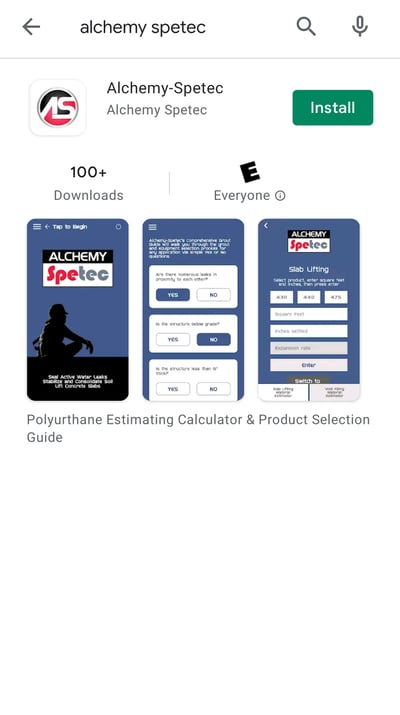
2. Create an account.
After installing the app, create an account by clicking "Sign Up" at the bottom and following the prompts.
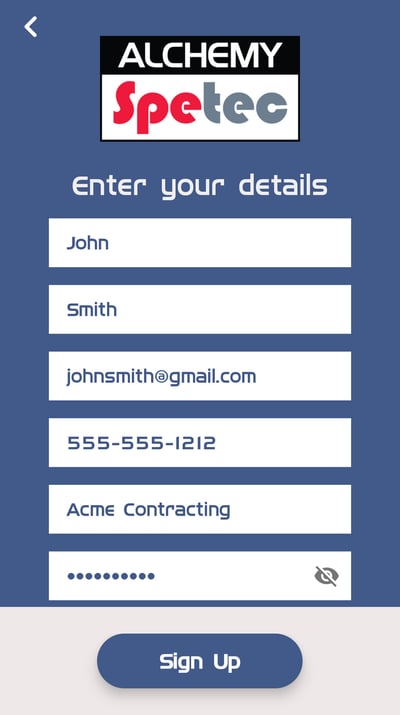
Select a Leak Seal Product for Your Job
1. Tap the three lines in the top left corner to display the application options. Choose Leak Seal Material Selection Guide.
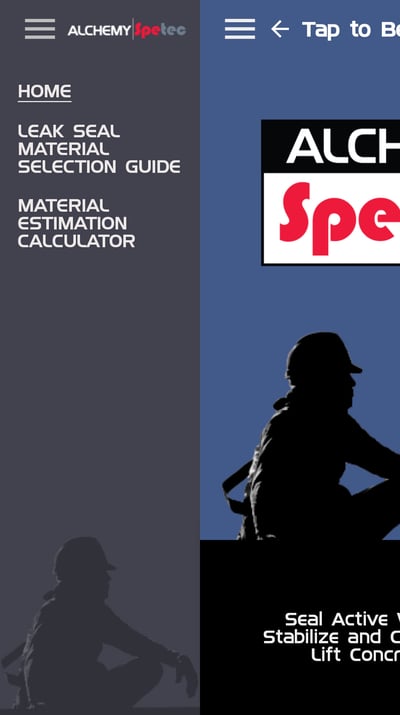
2. Answer a series of Yes/No questions about your leak seal job.
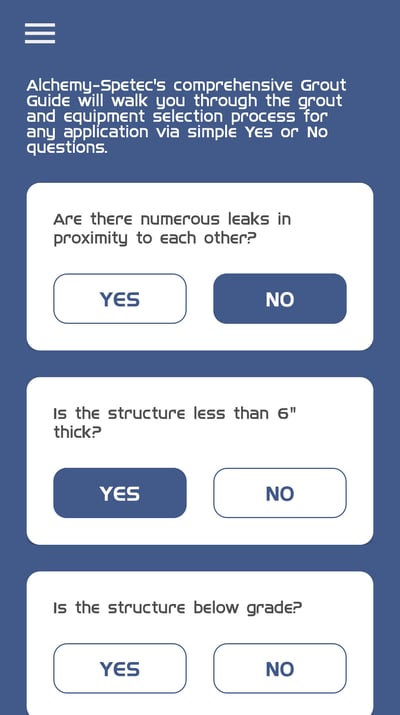
3. Review the product recommendation screen (and/or click the Start Over button at the bottom to begin again). Call the Alchemy-Spetec support squad at 404-618-0438 for more guidance specific to your project.
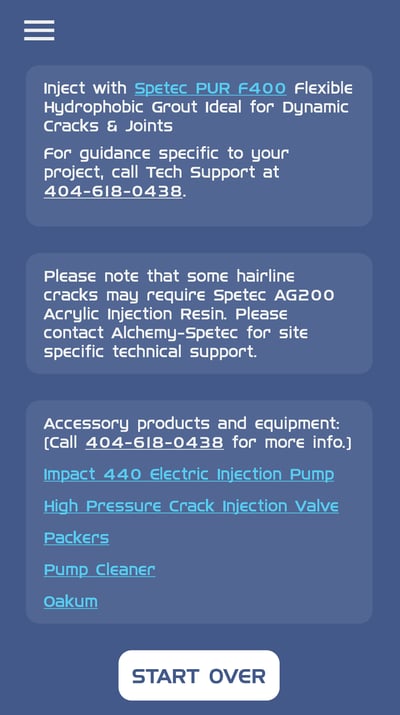
NOTE: You can also access the Leak Seal Material Selection Guide via this red button in the top right corner of our website home page...

Estimate Material for Your Leak Seal, Geotech, or Floor Repair Job
1. Tap the three lines in the top left corner to display the application options. Choose Material Estimation Calculator, then choose Geotech (Slab Lifting & Void Fill), Leak Seal, or Floor Repair for your job type.
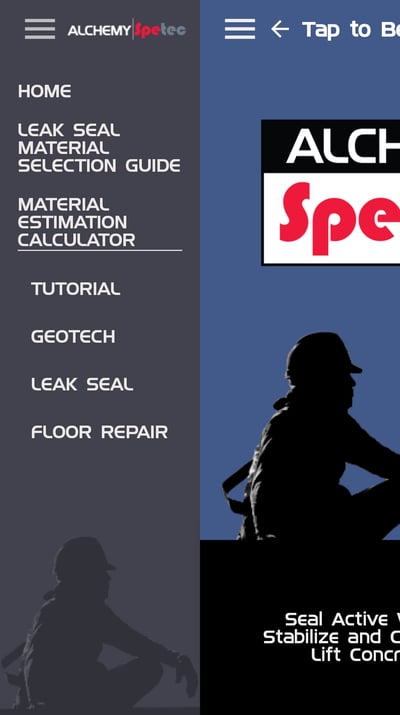
2. Select the measuring system you want to use.

3. The Slab Lifting calculator appears by default. You can switch to the Void Filling calculator by clicking the button at the bottom right. Choose your product and fill in the square feet of your slab, plus the inches it has settled (or inches of void if using the Void Filling calculator).
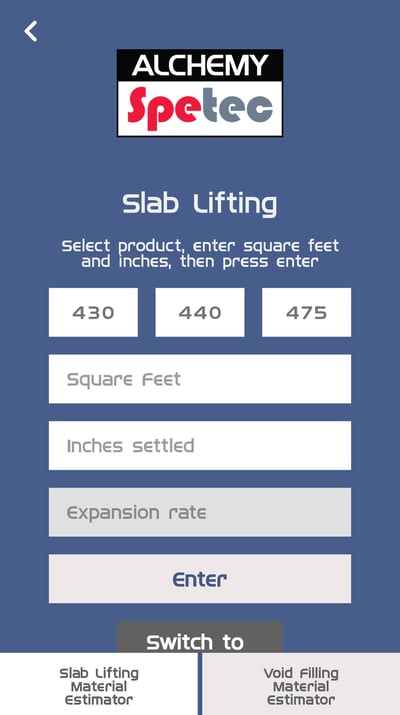
4. View the recommended material quantities. Call the Alchemy-Spetec support squad at 404-618-0438 for more guidance specific to your project.
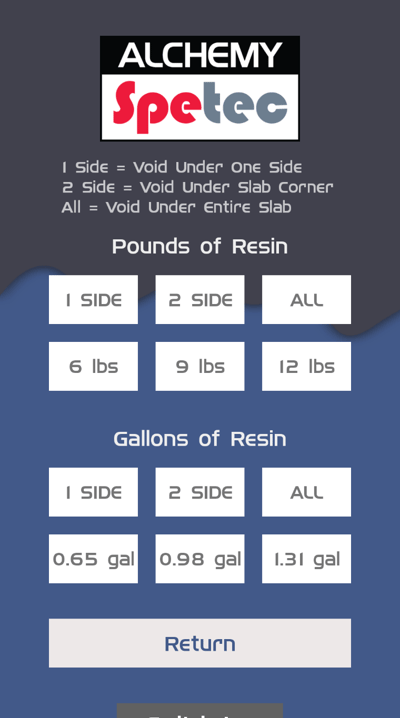
Want more information on Alchemy-Spetec products?



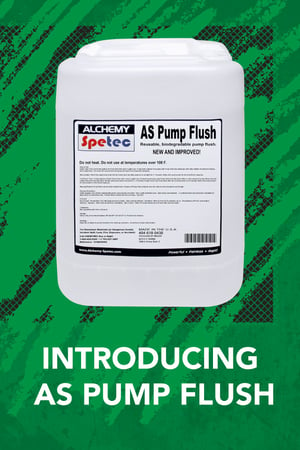 AS Pump Flush is a high-performance pump flush that is friendly to the environment and does an excellent job flushing out injection pumps. AS Pump Flush is a new and improved version of AP Flush 121 and Spetec Pump Cleaner.
AS Pump Flush is a high-performance pump flush that is friendly to the environment and does an excellent job flushing out injection pumps. AS Pump Flush is a new and improved version of AP Flush 121 and Spetec Pump Cleaner.



 On October 26th - 28th, Contractors across North America traveled to Alchemy-Spetec HQ in Tucker, GA for a thorough education in Slab Lifting, Soil Stabilization, the Deep Lift® process, equipment, and applications. They received hands-on training from a technical staff with decades of on-the-job experience.
On October 26th - 28th, Contractors across North America traveled to Alchemy-Spetec HQ in Tucker, GA for a thorough education in Slab Lifting, Soil Stabilization, the Deep Lift® process, equipment, and applications. They received hands-on training from a technical staff with decades of on-the-job experience.

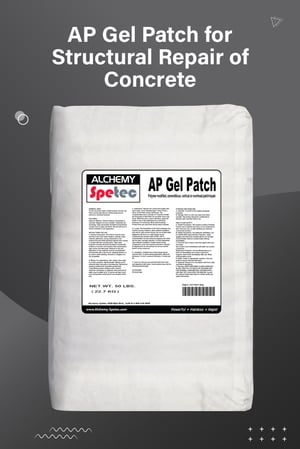 Alchemy-Spetec's
Alchemy-Spetec's 
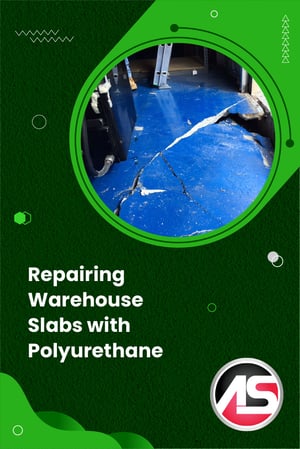 The warehouse slab/floor repair market can be a goldmine for contractors. Most major metro areas contain endless square miles of warehouse space. That's why we've posted a good number of warehouse floor and slab repair articles on this blog over the years. In this post, we'll introduce and link to the best Alchemy-Spetec warehouse slab repair articles.
The warehouse slab/floor repair market can be a goldmine for contractors. Most major metro areas contain endless square miles of warehouse space. That's why we've posted a good number of warehouse floor and slab repair articles on this blog over the years. In this post, we'll introduce and link to the best Alchemy-Spetec warehouse slab repair articles.












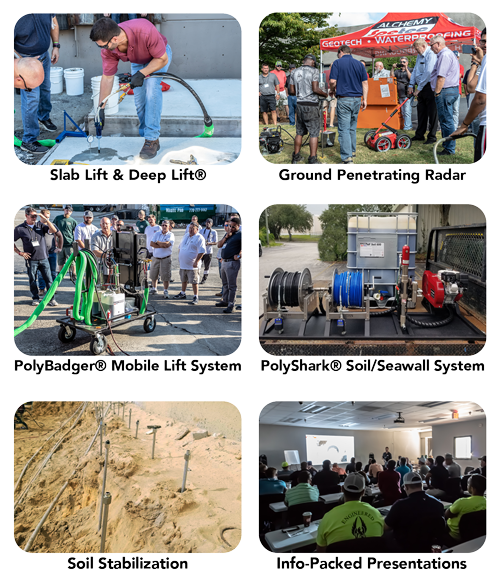

 As of today, the top three most viewed Alchemy-Spetec blog posts are:
As of today, the top three most viewed Alchemy-Spetec blog posts are:

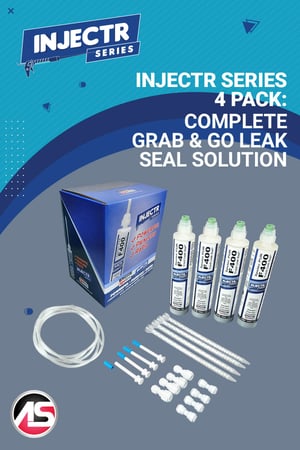
.jpg?width=1400&name=Banner%20-%20Saving%20a%20Luxury%20Penthouse%20Suite%20from%20Costly%20Water%20Damage%20(Just%20in%20Time).jpg)
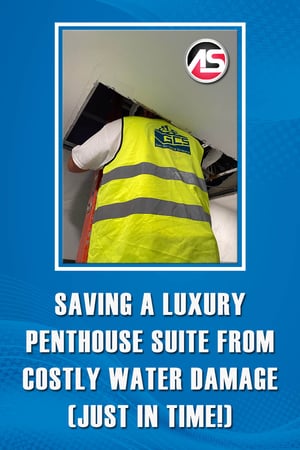 A contractor in Atlanta was recently called in to seal off a rain-induced
A contractor in Atlanta was recently called in to seal off a rain-induced 
